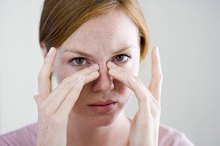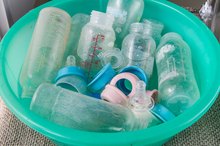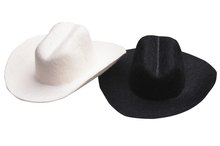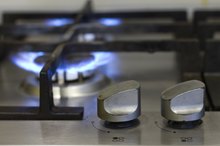What does fact checked mean?
At Healthfully, we strive to deliver objective content that is accurate and up-to-date. Our team periodically reviews articles in order to ensure content quality. The sources cited below consist of evidence from peer-reviewed journals, prominent medical organizations, academic associations, and government data.
The information contained on this site is for informational purposes only, and should not be used as a substitute for the advice of a professional health care provider. Please check with the appropriate physician regarding health questions and concerns. Although we strive to deliver accurate and up-to-date information, no guarantee to that effect is made.
Sterilizing Pacifiers in a Microwave
Out of convenience, it might be easier to sterilize your baby's pacifier in the microwave, rather than boiling it in water over the stove. You can sterilize a silicone pacifier in a microwave, but a specialized microwave-safe sterilizer is necessary 1. Dry pacifiers aren't made to withstand the heat and intense radiation from a microwave. Latex pacifiers can't be sanitized in microwave and require other cleaning methods.
Microwave-Safe Sterilizer
Silicone pacifiers must be boiled in water over the stove, without the use of a microwave, before their first use. Some silicone pacifiers come with a plastic sterilizer that is designed for use in a microwave after the initial boiling, using steady to clean and sanitize 24. You must fill the pacifier sterilizer to the water line, insert the silicone pacifier with the nipple face down, snap the shield in place and microwave on high for the time recommended by the manufacturer 1. Latex pacifiers must be boiled before the first use, but you can't use a dishwasher or a steam sterilizer for regular cleanings. Wash latex pacifiers with hot, soapy water.
- Silicone pacifiers must be boiled in water over the stove, without the use of a microwave, before their first use.
- Some silicone pacifiers come with a plastic sterilizer that is designed for use in a microwave after the initial boiling, using steady to clean and sanitize 2.
Boiling
How do I Heat Vicks VapoRub in Water to Relieve Sinus Pressure?
Learn More
If you're in a hurry and can't wait for water to boil over the stove, boil the water in the microwave first. Don't put your baby's pacifier in the water until you take it out of the microwave. Even though this is the same as boiling water over the stove, it's difficult to keep water at a boiling temperature once it's been removed from the microwave. You'll likely need to put the microwaved boiling water in a pan on the stove to keep it boiling. Boil the pacifier for three to five minutes and let it cool and dry before use, recommends Dr. Marcus DeGraw on the HealthTap website.
- If you're in a hurry and can't wait for water to boil over the stove, boil the water in the microwave first.
- Don't put your baby's pacifier in the water until you take it out of the microwave.
Dishwasher-Safe Pacifier
You can put most silicone pacifiers in the dishwasher, as long as they are labeled "dishwasher-safe." It doesn't matter what brand or type of dishwasher detergent you use as long as you rinse off any soap residue before you give it to your baby. The slight residue isn't harmful, but your baby might not like the taste. You don't have to run the pacifier through a heat cycle if you want to conserve energy and don't plan to use the heat for your dishes anyway. It doesn't hurt to wash your baby's pacifier with the rest of your dishes. Pacifiers are small and may slip through dishwasher racks, so consider purchasing a pacifier dishwasher tub at your local baby store. The silverware tray also works.
- You can put most silicone pacifiers in the dishwasher, as long as they are labeled "dishwasher-safe."
- Pacifiers are small and may slip through dishwasher racks, so consider purchasing a pacifier dishwasher tub at your local baby store.
Sterilization Tips
How to Clean Bottle Nipples
Learn More
Unless you use well water, you don't have to sterilize bottles and pacifiers, according to "Parenting" magazine, though you still have to clean them 24. Wash bottles and pacis either in the dishwasher (on the top rack) or by hand with soap and water before every use.
Related Articles
References
Writer Bio
As curriculum developer and educator, Kristine Tucker has enjoyed the plethora of English assignments she's read (and graded!) over the years. Her experiences as vice-president of an energy consulting firm have given her the opportunity to explore business writing and HR. Tucker has a BA and holds Ohio teaching credentials.









